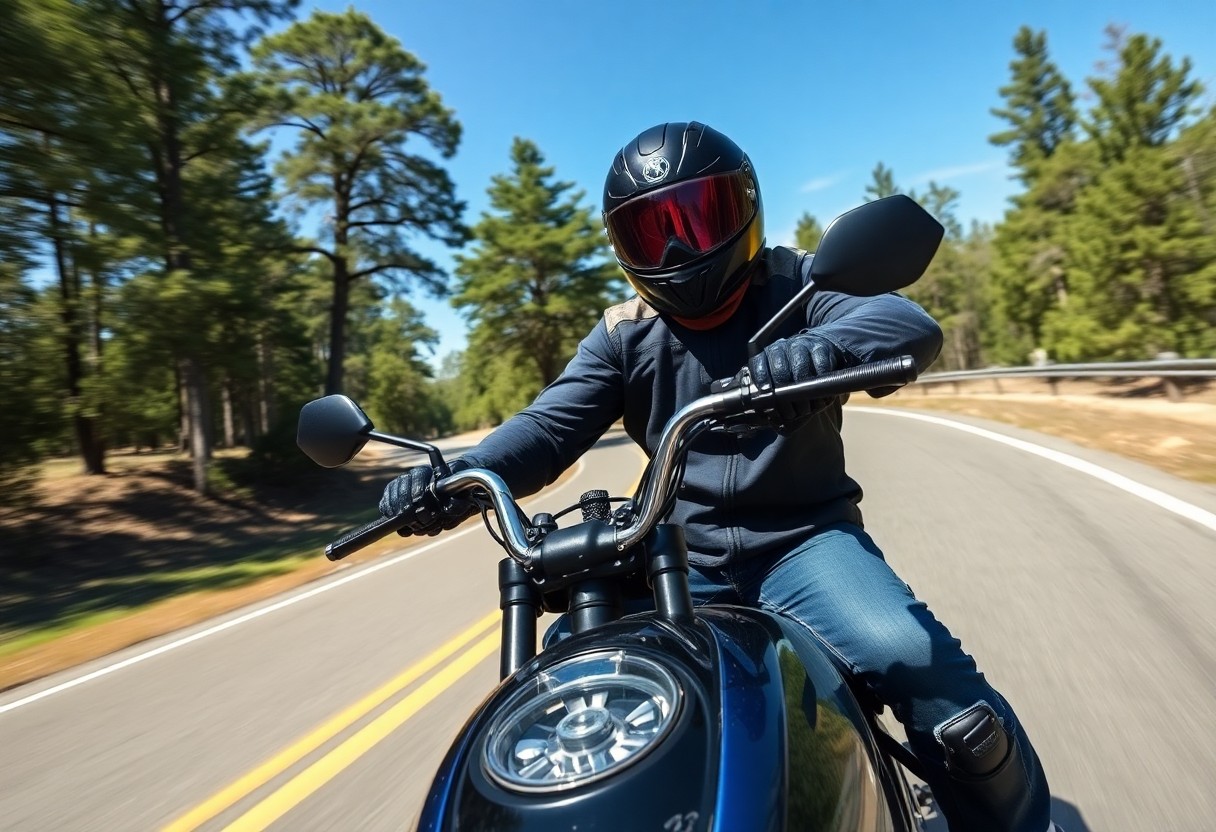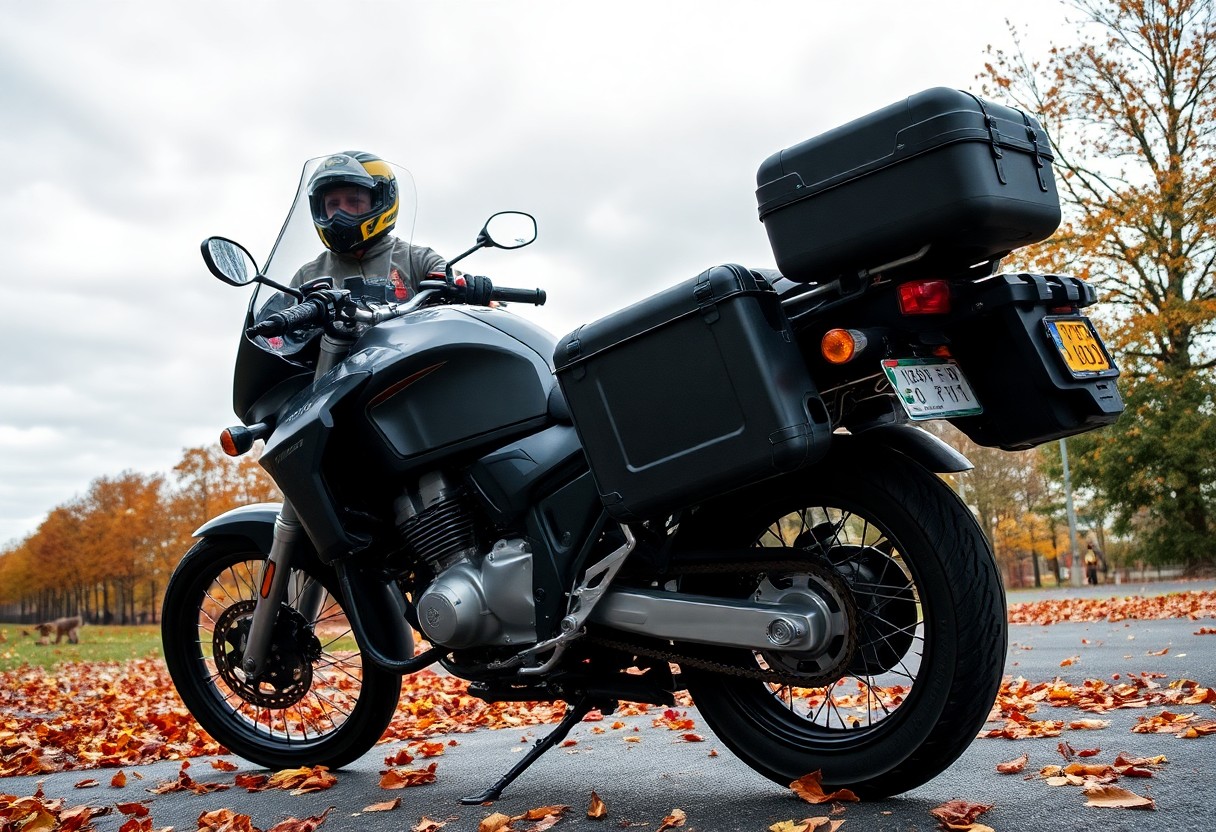Riding a motorcycle can be exhilarating, but it also comes with inherent risks that require your full attention and skill. Understanding the basics of defensive riding empowers you to anticipate potential hazards and respond appropriately, enhancing your safety on the road. By adopting a proactive approach, you not only protect yourself but also become a more responsible rider within the biking community. In this blog post, we’ll explore necessary defensive riding techniques that will help you navigate various traffic situations safely and effectively.
The Importance of Defensive Riding
Your safety on a motorcycle hinges greatly on your ability to practice defensive riding. This approach allows you to anticipate potential hazards and make calculated decisions on the road. By honing this skill, you not only enhance your safety but also contribute to a more responsible riding culture, which ultimately benefits all road users.
Definition and Principles
On a fundamental level, defensive riding involves being aware of your environment and making proactive choices to avoid accidents. Key principles include maintaining a safe following distance, scanning the road ahead for hazards, and being prepared to react appropriately to the actions of other drivers.
Benefits for Motorcyclists
Before you hit the road, it’s vital to understand the advantages defensive riding offers. By adopting this style, you greatly reduce your risk of accidents and improve your response time in critical situations, making your rides not only safer but also more enjoyable.
But beyond reducing accidents, defensive riding enhances your overall riding experience. You gain confidence as you trust your ability to navigate complex traffic scenarios and respond to unexpected challenges. This mindset also fosters a greater sense of control, helping you focus on enjoying the ride rather than just worrying about potential dangers on the road. Embracing defensive riding principles means you can engage fully and confidently in your passion for motorcycling.
Situational Awareness
The essence of defensive riding lies in your ability to remain acutely aware of your surroundings. Developing situational awareness means you constantly assess and adapt to the dynamic environment around you. By honing this skill, you can make informed decisions that enhance your safety on the road.
Scanning the Environment
Any successful motorcyclist knows the importance of actively scanning the environment. This involves regularly checking your mirrors and surroundings to identify potential threats or changes in traffic flow. By maintaining a 360-degree awareness, you respond promptly to any developments, ensuring you stay prepared for whatever the road may throw at you.
Anticipating Hazards
At times, you may find yourself in situations where potential dangers are not immediately obvious. Anticipating hazards encourages you to think ahead and envision how other drivers might behave or the obstacles that may arise. By developing a proactive mindset, you enhance your decision-making and substantially reduce your risk of accidents.
Further, it’s necessary to consider various scenarios that could unfold on the road. For example, you should anticipate sudden lane changes, pedestrians entering the street, or road conditions deteriorating due to weather. By visualizing these situations, you’re more equipped to react quickly and appropriately, ensuring your safety and that of others around you. Enhancing your ability to foresee these hazards allows you to ride with greater confidence and control.
Communication on the Road
Clearly, effective communication on the road is integral to ensuring your safety as a motorcyclist. By understanding how to convey your intentions clearly to other road users, you can minimize the chances of accidents and foster a safer riding environment. Utilize signals, maintain awareness of your surroundings, and engage with fellow motorists to enhance your overall riding experience.
Using Signals and Lights
To communicate effectively with other drivers, always use your motorcycle’s turn signals and brake lights. This practice alerts surrounding vehicles of your actions, allowing them to adjust their speed and distance accordingly. Clear signaling is vital when changing lanes, making turns, or slowing down, as these indicators can prevent misunderstandings and potential accidents on the road.
Eye Contact and Body Language
The significance of eye contact and body language cannot be understated when interacting with other road users. Establishing eye contact with drivers at intersections or in traffic can signal your intentions and gauge their responsiveness, enhancing your safety. Your posture and positioning on the motorcycle also convey confidence and awareness, making you more visible and less likely to be overlooked by others.
And your ability to read the body language of other drivers is equally important. Pay attention to their movement patterns—such as the direction of their head or the position of their vehicle—these cues can provide insight into their intent. By combining your observations with effective communication practices, you not only protect yourself but contribute to an overall safer riding atmosphere for everyone on the road.
Managing Speed and Distance
Now, mastering the art of managing speed and distance can significantly enhance your safety while riding a motorcycle. By doing so, you not only protect yourself but also ensure that other road users remain safe. A key component of this practice is understanding how to effectively adjust your speed relative to traffic conditions and keeping a safe distance from vehicles around you.
Maintaining Safe Following Distances
For every motorcycle rider, maintaining a safe following distance is vital to avoid collisions. A general guideline is to keep a three-second gap between you and the vehicle ahead, allowing ample time to react should the driver suddenly brake. Adjust this distance based on factors such as weather, road conditions, and the vehicle type in front of you, ensuring that you remain in control.
Adjusting Speed for Conditions
Following specific traffic regulations and adapting your speed according to environmental factors will significantly contribute to a safer ride. Whether you face rain, fog, or even poorly maintained roads, your speed should reflect these conditions to maintain optimal control and reaction time. Additionally, be attentive to the behavior of surrounding traffic, adjusting your speed accordingly to avoid potential hazards.
To effectively adjust your speed for varying conditions, evaluate each situation as it arises. In inclement weather, such as rain or snow, it’s wise to reduce your speed to enhance traction and control. During night rides, lower visibility may require you to slow down and increase your following distance. Always keep in mind the need to stay alert and anticipate changes in road or traffic conditions, ensuring you maintain a proactive approach to riding safely.
The Role of Gear in Safety
All motorcycle riders should prioritize wearing appropriate gear, as it significantly enhances your safety on the road. Proper protective equipment not only safeguards you from serious injuries in the event of an accident but also improves your overall riding experience by providing comfort and support. Investing in high-quality gear is an necessary step toward responsible motorcycling.
Importance of Proper Equipment
At the end of the day, your choice of gear can be the difference between a minor incident and severe injury. Riding without proper gear exposes you to unnecessary risks, including abrasions, fractures, and other severe injuries in case of an accident. Wearing the right equipment can dramatically lower the chances of serious harm and help keep you safe while enjoying your ride.
Protective Apparel Recommendations
Along with a properly fitted helmet, your attire plays an integral role in ensuring your safety as you ride. Invest in a sturdy motorcycle jacket, pants made of durable materials, gloves, and boots that provide reliable ankle protection. These items are designed to absorb impact, resist abrasions, and protect your body from the elements. The right gear not only enhances your safety but also boosts your confidence on the road.
Recommendations for protective apparel should emphasize the use of materials like leather or high-quality textile that offer abrasion resistance. Look for jackets and pants that feature armor in key impact areas such as elbows, shoulders, knees, and hips. Additionally, ensure that your gloves provide good grip and knuckle protection. For footwear, choose boots that cover your ankles and provide sturdy reinforcement. By selecting the right gear, you set the stage for a safer riding experience.
Practicing Defensive Riding Techniques
Keep your focus on refining your defensive riding skills. This involves not only understanding theoretical concepts but also consistently putting them into practice. By developing a habit of applying these techniques during every ride, you enhance your ability to react to potential hazards, maintain awareness of your surroundings, and make safer decisions on the road.
Skills Development and Training
Along your journey to becoming a safer rider, investing time in skills development and training is vital. Enroll in advanced riding courses that emphasize defensive techniques, allowing you to practice in a controlled environment. Additionally, regular practice on various terrains and in diverse traffic conditions can help build your confidence and adaptability while riding.
Real-World Application of Techniques
Techniques learned through training and practice come to life when you encounter real-world situations on the road. By constantly applying the skills of defensive riding, you cultivate a proactive mindset that prepares you for the unpredictable nature of traffic. Focusing on visibility, maintaining a safe following distance, and always being aware of escape routes will help you navigate challenging scenarios seamlessly.
Consequently, as you incorporate these defensive riding techniques into your daily riding habits, you will not only improve your riding skills but also increase your overall safety. Each ride becomes an opportunity to apply what you’ve learned, allowing you to anticipate potential hazards and react effectively. Facing different scenarios will allow you to sharpen your judgment, ensuring that you are always prepared for whatever the road may bring.
Conclusion
Summing up, understanding the basics of defensive riding is crucial for enhancing your motorcycle safety. By sharpening your awareness, anticipating potential hazards, and maintaining a safe distance from other vehicles, you empower yourself to respond effectively in unexpected situations. Embracing these fundamental principles not only protects your life but also contributes to safer roads for everyone. Equip yourself with this knowledge, and you will significantly reduce risks associated with motorcycling, enabling you to enjoy the ride while staying safe.


